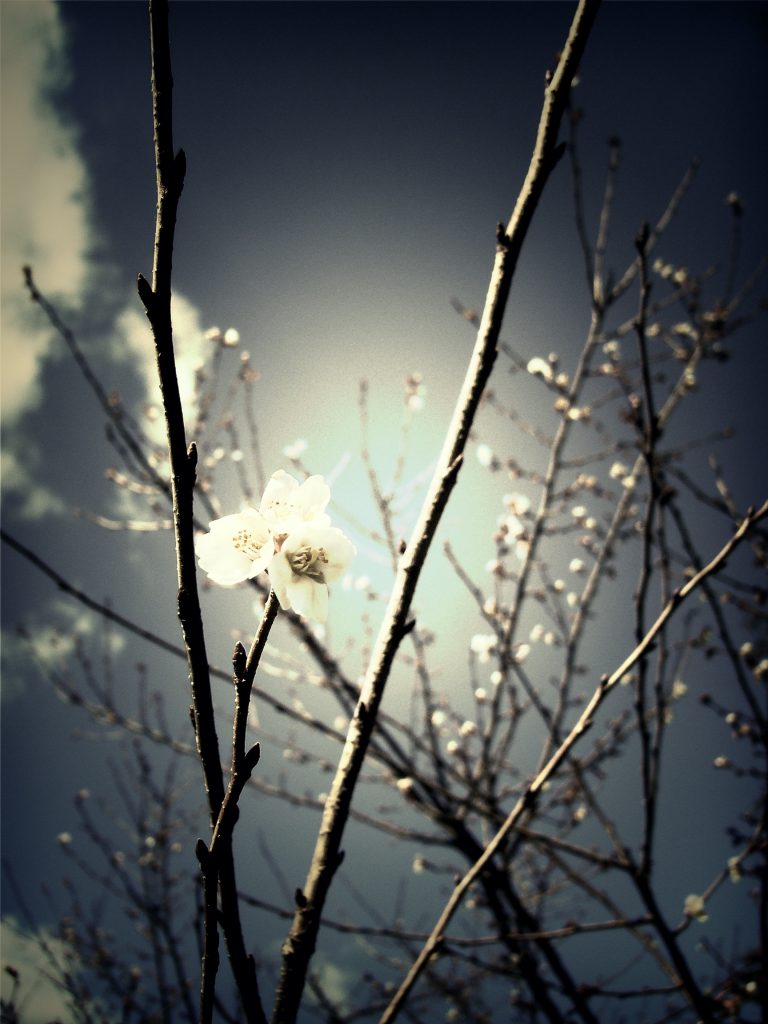GOD wishes to do something in mankind that He has never done before, save for a few individuals, and that is to give the gift of Himself so completely to His Bride, that she begins to live and move and have her being in a completely new mode.
He wishes to give the Church the “sanctity of sanctities.”
A NEW AND DIVINE HOLINESS
In a little known speech to the Rogationist Fathers, Pope John Paul II noted how, through their founder Blessed Annibale Maria di Francia (now St. Annibale or St. Hannibal)…
God himself had provided to bring about that “new and divine” holiness with which the Holy Spirit wishes to enrich Christians at the dawn of the third millennium, in order to “make Christ the heart of the world.” —POPE JOHN PAUL II, Address to the Rogationist Fathers, n. 6, www.vatican.va
The three foundational principles of St. Hannibal, or three buds you could say, that would blossom into this new springtime are:
I. To put the Blessed Eucharist at the centre of personal and community life, in order to learn from it how to pray and love according to the Heart of Christ.
II. To exist as a body in unity, in the unanimity of hearts that makes prayer acceptable to God.
III. Intimate association with the suffering of the Most Sacred Heart of Jesus. [1]cf. POPE JOHN PAUL II, Address to the Rogationist Fathers, n. 4, www.vatican.va
What St. John Paul describes above is both a programme for and the programme of the era of peace that is coming after the purification of the world in which the Eucharist, the Unity, and the Sufferings of the Church will serve to bring to fruition that one Bride of Christ, spotless and unblemished, prepared for the eternal Wedding Feast of the Lamb. As St. John heard and saw in a vision:
Let us rejoice and be glad and give him glory. For the wedding day of the Lamb has come, his bride has made herself ready. She was allowed to wear a bright, clean linen garment. (Rev 19:7-8)
That is, she was allowed a “new and divine” holiness…
THE GIFT
Several mystics have spoken of this new era that is coming, though using different terms to describe it. ‘These include the “Mystical Incarnation” of Venerable Conchita de Armida and Arhcbishop Luis Martinez, the “New Indwelling” of Blessed Elizabeth of the Trinity, the “Assumption of Souls in Love” of St. Maxamilian Kolbe, the “Divine Substitution” of Blessed Dina Belanger’, [2]cf. The Crown and Completion of All Sanctities by Daniel O’Connor, p. 11; available here the “Flame of Love” of Elizabeth Kindelmann (at least as its beginning), and the “Gift of Living in the Divine Will” of Servant of God Luisa Piccarreta.
This “new and divine” holiness is essentially the state of being in the Divine Will that belonged to Adam and Eve before the fall, and that was recovered in the “new Eve”, Mary, and of course was Christ’s constant mode, the “new Adam.” [3]cf. 1 Cor 15:45 The Blessed Virgin Mary, as I have written before, is the key to understanding the nature of the Church as she is, and is going to be. [4]cf. The Key to the WomanWhat will this look like?
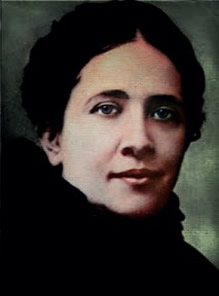 Jesus explained to Venerable Conchita:
Jesus explained to Venerable Conchita:
This is much more than spiritual marriage. It is the grace of incarnating Me, of living and growing in your soul, never to leave it, to possess you and to be possessed by you as in one and the same substance. It is I who communicate it to your soul in a compenetration which cannot be comprehended: it is the grace of graces… It is a union of the same nature as that of the union of heaven, except that in paradise the veil which conceals the Divinity disappears… —cited in The Crown and Completion of All Sanctities, by Daniel O’Connor, p. 11-12; nb. Ronda Chervin, Walk with Me, Jesus
It is again, in a word, to live in the Divine Will. What does this mean? Brothers and sisters, it has been reserved for these times, but I believe mostly the times to come, to unpack the full theology and breadth of what God is and is going to do. And we’ve only just begun. As Jesus said to Luisa:
The time in which these writings will be made known is relative to and dependent on the disposition of souls who wish to receive so great a good, as well as on the effort of those who must apply themselves in being its trumpet-bearers by offering up the sacrifice of heralding in the new era of peace… —Jesus to Luisa, The Gift of Living in the Divine Will in the Writings of Luisa Piccarreta, n. 1.11.6, Rev. Joseph Iannuzzi
St. Louis de Montfort perhaps captures best the groaning that is steadily rising from the body of Christ for this new divine gift as 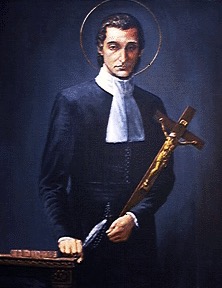 evil continues to exhaust itself:
evil continues to exhaust itself:
Your divine commandments are broken, your Gospel is thrown aside, torrents of iniquity flood the whole earth carrying away even your servants… Will everything come to the same end as Sodom and Gomorrah? Will you never break your silence? Will you tolerate all this for ever? Is it not true that your will must be done on earth as it is in heaven? Is it not true that your kingdom must come? Did you not give to some souls, dear to you, a vision of the future renewal of the Church? —Prayer for Missionaries, n. 5; www.ewtn.com
Rather than try to unfold here what took Luisa 36 volumes to write—a work that remains largely unedited and untranslated (and is, in fact, under a moratorium for being published, save for a few works mentioned below), I will just add one more hint of this coming grace before returning to my particular mission of “heralding in the new era of peace.” [5]“A new age in which love is not greedy or self-seeking, but pure, faithful and genuinely free, open to others, respectful of their dignity, seeking their good, radiating joy and beauty. A new age in which hope liberates us from the shallowness, apathy, and self-absorption which deaden our souls and poison our relationships. Dear young friends, the Lord is asking you to be prophets of this new age…” —POPE BENEDICT XVI, Homily, World Youth Day, Sydney, Australia, July 20th, 2008
In his landmark Doctoral Dissertation, which carries the Pontifical Gregorian University’s seals of approval as well as ecclesiastical approval authorized by the Holy See, theologian Rev. Joseph Iannuzzi gives us a bit more of glimpse of this grace of the coming “new Pentecost” that the Popes of the past century have been praying for.
Throughout her writings Luisa presents the gift of Living in the Divine Will as a new and divine indwelling in the soul, which she refers to as the “Real Life” of Christ. The Real Life of Christ consists primarily of the soul’s continuous participation in the life of Jesus in the Eucharist. While God may become substantially present in an inanimate host, Luisa affirms that the same may be said of an animate subject, i.e., the human soul. —The Gift of Living in the Divine Will, by Rev. Joseph Iannuzzi, n. 4.1.21, p. 119
This transformation into a ‘ “living Host” that perfectly mirrors Jesus’ interior state’, [6]Ibid. n. 4.1.22, p. 123 while still remaining a creature with full free will and faculties but wholly united to the inner life of the Holy Trinity, will come about as a new gift, a new grace, a new sanctity that will, according to Luisa, make the sanctity of the saints of the 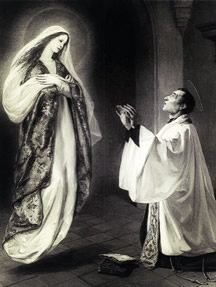 past seem as but a shadow in comparison. In the words of that great Marian saint:
past seem as but a shadow in comparison. In the words of that great Marian saint:
Towards the end of the world… Almighty God and His Holy Mother are to raise up great saints who will surpass in holiness most other saints as much as the cedars of Lebanon tower above little shrubs. —St. Louis de Montfort, True Devotion to Mary, Art. 47
But you might be saying by now, “What…? Greater sanctity than Catherina of Sienna, than John of the Cross, than St. Francis of Assisi??” The answer as to why lies in the riddle of the ages…
THE RIDDLE OF THE AGES
A while ago, a thought came to me to write about the The Coming Age of Love and the Four Ages of Grace. The first three ages are that of the Holy Trinity’s action within time. St. John Paul II in his speech to the Rogationists spoke of “a call to holiness on the path of the evangelical counsels.” [7]Ibid., n. 3 One could also speak of the three ages of Faith, Hope, and Love [8]cf. The Coming Age of Love which are a path to the “sanctity of sanctities.” As it says in the Catechism:
Creation has its own goodness and proper perfection, but it did not spring forth complete from the hands of the Creator. The universe was created “in a state of journeying” (in statu viae) toward an ultimate perfection yet to be attained, to which God has destined it. —Catechism of the Catholic Church, n. 302
The Age of the Father, which is the “age of Faith”, began after the Fall of Adam and Eve when God entered into covenants with mankind. The Age of the Son, or “age of Hope”, began with the New Covenant in 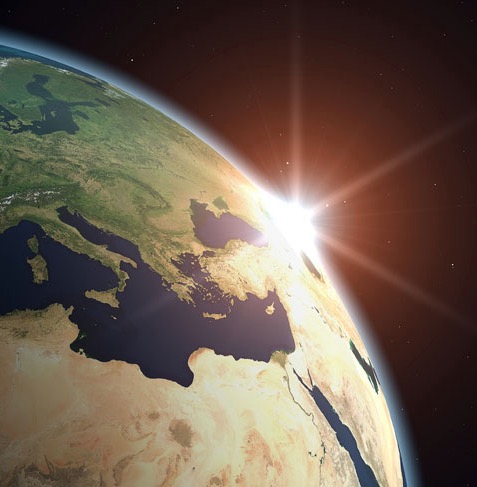
Christ. And The Age of the Holy Spirit is that which we are entering as we “cross the threshold of hope” into an “age of Love.”
The time has come to exalt the Holy Spirit in the world… I desire that this last epoch be consecrated in a very special way to this Holy Spirit…It is his turn, it is his epoch, it is the triumph of love in My Church, in the whole universe. —Jesus to Venerable María Concepción Cabrera de Armida; Fr. Marie-Michel Philipon, Conchita: A Mother’s Spiritual Diary, p. 195-196
This Triumph of Our Lady and the Church is not the bliss of Heaven, that definitive state of total perfection in body, soul, and spirit. Thus, the “era of peace” or “third millennium” of Christianity, says John Paul II, is not an opportunity “to indulge in a new millenarianism”…
…with the the temptation to predict substantial changes in it in the life of society as a whole and of every individual. Human life will continue, people will continue to learn about successes and failures, moments of glory and stages of decay, and Christ our Lord always will, until the end of time, be the only source of salvation. —POPE JOHN PAUL II, National Conference of Bishops, January 29th, 1996; www.vatican.va
Still, the last stage of the Church’s growth in perfection will also be unparalleled in history, because Scripture itself testifies that Jesus is preparing for Himself a Bride who shall be sanctified.
He chose us in him, before the foundation of the world, to be holy and without blemish before him… that he might present to himself the church in splendor, without spot or wrinkle or any such thing, that she might be holy and without blemish. (Eph 1:4, 5:27)
In fact, Jesus, our High Priest, prayed precisely for this sanctity, which would be realized most perfectly in unity :
…that they may all be one, as you, Father, are in me and I in you, that they also may be in us… that they may be brought to perfection as one, that the world may know that you sent me, and that you loved them even as you loved me. (John 17:21-23)
In the second century apostolic “Epistle of Barnabas”, the Church Father speaks of this coming sanctity after the appearance of the Antichrist and to take place during a period of “rest” for the Church:
…when His Son, coming [again], shall destroy the time of the wicked man, and judge the ungodly, and change the sun, and the moon, and the stars, then shall He truly rest on the seventh day. Moreover, He says,
You shall sanctify it with pure hands and a pure heart.If, therefore, any one can now sanctify the day which God has sanctified, except he is pure in heart in all things, we are deceived. Behold, therefore: certainly then one properly resting sanctifies it, when we ourselves, having received the promise, wickedness no longer existing, and all things having been made new by the Lord, shall be able to work righteousness. Then we shall be able to sanctify it, having been first sanctified ourselves… when, giving rest to all things, I shall make a beginning of the eighth day, that is, a beginning of another world. —Epistle of Barnabas (70-79 A.D.), Ch. 15, written by a second century Apostolic Father
In her writings, the Lord speaks to Luisa of these three ages in time, what He calls the “Fiat of Creation”, the “Fiat of Redemption”, and the “Fiat 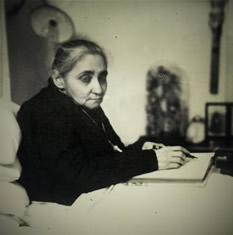 of Sanctification” that form one single path toward the Holy of holies.
of Sanctification” that form one single path toward the Holy of holies.
All three together will interweave and accomplish the sanctification of man. The third Fiat [of Sanctification] will give so much grace to man as to restore him to his original state. And only then, when I see man as I created him, will My work be complete… —Jesus to Luisa, The Gift of Living in the Divine Will, by Rev. Joseph Iannuzzi, n. 4.1, p. 72
Just as all men share in the disobedience of Adam, so all men must share in the obedience of Christ to the Father’s will. Redemption will be complete only when all men share his obedience. —Fr. Walter Ciszek, He Leadeth Me, pg. 116-117
This is possible through the power of the Holy Spirit:
After Christ had completed his mission on earth, it still remained necessary for us to become sharers in the divine nature of the Word. We had to give up our own life and be so transformed that we would begin to live an entirely new kind of life that would be pleasing to God. This was something we could do only by sharing in the Holy Spirit. —Saint Cyril of Alexandria
Is this unfair, then, that those who live in the last age of man should become the most holy? The answer lies in the word “gift.” As St. Paul wrote:
For God is the one who, for his good purpose, works in you both to desire and to work. (Phil 2:13)
The gift of Living in the Divine Will that God wishes to give His Church in these latter times will come about precisely by the desire and co-operation of the body of Christ that God Himself inspires—as usual. Thus, this is the great work of the Mother of God at this hour: to gather us into the upper room of her Immaculate Heart to prepare the Church to receive the “Flame of Love” that is Jesus Christ Himself, [9]cf. The Flame of Love, p. 38, from Elizabeth Kindelmann’s diary; 1962; Imprimatur Archbishop Charles Chaput according to Elizabeth Kindelmann. This is precisely what Luisa wrote when she described this gift to come as the “Real Life” of Christ and why we can also speak of this as the dawning of the “day of the Lord”, [10]cf. Two More Days or “middle coming” of Christ, [11]cf. The Triumph – Parts I, II, and III; “In his first coming Our Lord came in our flesh and in our weakness; in this middle coming he comes in spirit and power; in the final coming he will be seen in glory and majesty…” —St. Bernard, Liturgy of the Hours, Vol I, p. 169 or “rising Morning Star” [12]cf. The Rising Morning Star that heralds and is the beginning of the final return of Jesus in glory at the end of time, [13]cf. Dear Holy Father… He is Coming! when we shall see Him face to face. It is also the fulfillment of the Our Father— “Thy kingdom come” —insofar as God accomplishes His divine plan within salvation history:
…the Kingdom of God means Christ himself, whom we daily desire to come, and whose coming we wish to be manifested quickly to us. For as he is our resurrection, since in him we rise, so he can also be understood as the Kingdom of God, for in him we shall reign. —Catechism of the Catholic Church, n. 2816
It is an interior coming of Christ within His Bride.
The Church, which comprises the elect, is fittingly styled daybreak or dawn… It will be fully day for her when she shines with the perfect brilliance of interior light. —St. Gregory the Great, Pope; Liturgy of the Hours, Vol III, p. 308
This, again, is affirmed in the magisterial teaching of the Church:
It would not be inconsistent with the truth to understand the words, “Thy will be done on earth as it is in heaven,” to mean: “in the Church as in our Lord Jesus Christ himself”; or “in the Bride who has been betrothed, just as in the Bridegroom who has accomplished the will of the Father.” —Catechism of the Catholic Church, n. 2827
I also saw the souls of those who had been beheaded for their witness to Jesus and for the word of God, and who had not worshiped the beast or its image nor had accepted its mark on their foreheads or hands. They came to life and they reigned with Christ for a thousand years. (Rev 20:4)
GREATER THAN ST. FRANCIS?
Perhaps we can understand why the holiness of the saints of this next era will surpass that of previous generations by going back to the threshold of the second age of grace, the “Fiat of Redemption.” Jesus said,
Amen, I say to you, among those born of women there has been none greater than John the Baptist; yet the least in the kingdom of heaven is greater than he. (Matt 11:11)
You see, Abraham, Moses, John the Baptist, etc. were great men whose faith was credited to them. Yet, Jesus makes the point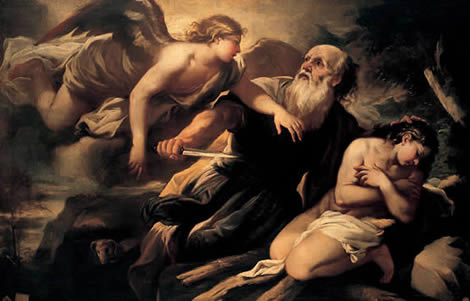 that the Fiat of Redemption gave the next generation something greater, and that is the gift of the indwelling Trinity. The age of Faith gave way to a living Hope and new possibility of sanctity and communion with God. For this reason, even the least in the Kingdom possesses something greater than the patriarchs before them. Writes St. Paul:
that the Fiat of Redemption gave the next generation something greater, and that is the gift of the indwelling Trinity. The age of Faith gave way to a living Hope and new possibility of sanctity and communion with God. For this reason, even the least in the Kingdom possesses something greater than the patriarchs before them. Writes St. Paul:
God had foreseen something better for us, so that without us they should not be made perfect. (Heb 11:40)
But with us, they will know perfection and all the glory their faith in God merits (and how that looks in eternity is known only to God. Abraham may in fact reach a higher stage of glory than canonized saints. Who knows?)
When Luisa asked the Lord this very question of how it is possible that there has been no saint who always did God’s most Holy Will and who lived ‘in your Will’, Jesus replied:
Of course there have been saints who have always done My Will, but they have taken from My Will only as much as they knew about.
Jesus then compares His Divine Will to a “sumptuous palace” to 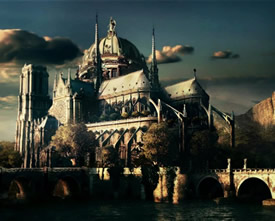 whom He, like its prince, has revealed, bit by bit, age by age, its glory:
whom He, like its prince, has revealed, bit by bit, age by age, its glory:
To one group of people he has shown the way to get to his palace; to a second group he has pointed out the door; to the third he has shown the staircase; to the fourth the first rooms; and to the last group he has opened all the rooms… —Jesus to Luisa, Vol. XIV, November 6th, 1922, Saints in the Divine Will by Fr. Sergio Pellegrini, with the approval of the Archbishop of Trani, Giovan Battista Pichierri, p. 23-24
That is to say that Abraham, Moses, David, John the Baptist, St. Paul, St. Francis, St. Aquinas, St. Augustine, St. Therese, St. Faustina, St. John Paul II… have all revealed to the Church the way deeper and deeper into the mystery of God that we will ALL share in the beatitude of Heaven in its fullness, as one body, one temple in Christ.
…you are fellow citizens with the holy ones and members of the household of God, built upon the foundation of the apostles and prophets, with Christ Jesus himself as the capstone. Through him the whole structure is held together and grows into a temple sacred in the Lord; in him you also are being built together into a dwelling place of God in the Spirit. (Eph 2:19-22)
And so now, at this time in salvation history, “God has foreseen something better for us”, to bring us deeper mysteries of His Divine Will as a body. [14]cf. John 17:23 and The Coming Wave of Unity And that perfect Unity, whose source is the Holy Eucharist, will come about through the Passion of the Church, for…
The way of perfection passes by way of the Cross. —Catechism of the Catholic Church, n. 2015
The three buds of St. Hannibal [15]nb. St. Hannibal was the spiritual director of Luisa Piccarreta —the Eucharist, Unity, and the Cross—bring about the Kingdom of God on earth:
The Kingdom of God has been coming since the Last Supper and, in the Eucharist, it is in our midst. The Kingdom will come in glory when Christ hands it over to his Father. —Catechism of the Catholic Church, n. 2816
My kingdom on earth is My life in the human soul. —Jesus to St. Faustina, Divine Mercy in My Soul, Diary, n. 1784
And that Unity, as it once was between Adam and Eve, is the  climax of Living in the Divine Will, the sanctity of sanctities, which is the Will of God on earth as it is in heaven. And this reign of Christ and His saints will prepare the Church to enter into the last and eternal age at the end of time.
climax of Living in the Divine Will, the sanctity of sanctities, which is the Will of God on earth as it is in heaven. And this reign of Christ and His saints will prepare the Church to enter into the last and eternal age at the end of time.
…every day in the prayer of the Our Father we ask the Lord: “Thy will be done, on earth as it is in heaven” (Matt 6:10)…. we recognize that “heaven” is where the will of God is done, and that “earth” becomes “heaven” —i.e., the place of the presence of love, of goodness, of truth and of divine beauty—only if on earth the will of God is done. —POPE BENEDICT XVI, General Audience, February 1st, 2012, Vatican City
Jesus himself is what we call ‘heaven.’ —POPE BENEDICT XVI, quoted in Magnificat, p. 116, May 2013
…heaven is God. —POPE BENEDICT XVI, On the Feast of the Assumption of Mary, Homily, August 15th, 2008; Castel Gondolfo, Italy; Catholic News Service, www.catholicnews.com
Why not ask him to send us new witnesses of his presence today, in whom he himself will come to us? And this prayer, while it is not directly focused on the end of the world, is nevertheless a real prayer for his coming; it contains the full breadth of the prayer that he himself taught us: “Your kingdom come!” Come, Lord Jesus! —POPE BENEDICT XVI, Jesus of Nazareth, Holy Week: From the Entrance into Jerusalem to the Resurrection, p. 292, Ignatius Press
______________________
RELATED SOURCES:
To my knowledge, there are only a few works on Luisa’s writings that have ecclesial approbation while her volumes undergo careful editing and translation. They are excellent works to help the reader understand the theology of the “gift of Living in the Divine Will”:
- The Gift of Living in the Divine Will by Rev. Joseph Iannuzzi, PH. B., STB, M. Div., STL, STD, St. Andrew’s Productions, www.SaintAndrew.com; also available at www.ltdw.org
- Saints in the Divine Will by Fr. Sergio Pellegrini; see text at www.luisapiccarreta.co
A new book has just come out by Daniel S. O’Connor that draws upon the approved texts of The Gift of Living in the Divine Will. It is an excellent introduction to the spirituality and writings of Luisa Piccarreta that will help to answer many basic questions on the coming “era of peace” when this “gift” will be fully realized in the Church:
- The Crown and Completion of All Sanctities, by Daniel S. O’Connor; available here.
- The Hours of the Passion of Our Lord Jesus Christ, written by Luisa Piccarreta and edited by her spiritual director, St. Hannibal.
- The Virgin Mary in the Kingdom of the Divine Will also bears the approbations of an Imprimatur and Nihil obstat
Perhaps the most important question is how do we prepare to receive this gift? Anthony Mullen, National Director for the United States of America for The International Movement of The Flame of Love of The Immaculate Heart of Mary, has written an excellent summary of how this gift ties into the New Pentecost prayed for by the Pope’s of the last century, and more importantly, what the Blessed Mother has asked us specifically to do to prepare. I have posted his writing here: The Right Spiritual Steps
RELATED WRITINGS BY MARK:
- see footnotes below and the category: The Era of Peace
Thanks for your support
of this full-time ministry!
To subscribe, click here.
Footnotes
| ↑1 | cf. POPE JOHN PAUL II, Address to the Rogationist Fathers, n. 4, www.vatican.va |
|---|---|
| ↑2 | cf. The Crown and Completion of All Sanctities by Daniel O’Connor, p. 11; available here |
| ↑3 | cf. 1 Cor 15:45 |
| ↑4 | cf. The Key to the Woman |
| ↑5 | “A new age in which love is not greedy or self-seeking, but pure, faithful and genuinely free, open to others, respectful of their dignity, seeking their good, radiating joy and beauty. A new age in which hope liberates us from the shallowness, apathy, and self-absorption which deaden our souls and poison our relationships. Dear young friends, the Lord is asking you to be prophets of this new age…” —POPE BENEDICT XVI, Homily, World Youth Day, Sydney, Australia, July 20th, 2008 |
| ↑6 | Ibid. n. 4.1.22, p. 123 |
| ↑7 | Ibid., n. 3 |
| ↑8 | cf. The Coming Age of Love |
| ↑9 | cf. The Flame of Love, p. 38, from Elizabeth Kindelmann’s diary; 1962; Imprimatur Archbishop Charles Chaput |
| ↑10 | cf. Two More Days |
| ↑11 | cf. The Triumph – Parts I, II, and III; “In his first coming Our Lord came in our flesh and in our weakness; in this middle coming he comes in spirit and power; in the final coming he will be seen in glory and majesty…” —St. Bernard, Liturgy of the Hours, Vol I, p. 169 |
| ↑12 | cf. The Rising Morning Star |
| ↑13 | cf. Dear Holy Father… He is Coming! |
| ↑14 | cf. John 17:23 and The Coming Wave of Unity |
| ↑15 | nb. St. Hannibal was the spiritual director of Luisa Piccarreta |

